-
 Bitcoin
Bitcoin $105,641.3708
0.06% -
 Ethereum
Ethereum $2,536.3816
-1.10% -
 Tether USDt
Tether USDt $1.0004
0.00% -
 XRP
XRP $2.1497
0.21% -
 BNB
BNB $647.7244
-0.64% -
 Solana
Solana $145.9061
-0.86% -
 USDC
USDC $0.9999
0.00% -
 Dogecoin
Dogecoin $0.1781
0.13% -
 TRON
TRON $0.2722
0.39% -
 Cardano
Cardano $0.6275
-1.63% -
 Hyperliquid
Hyperliquid $40.5787
-2.94% -
 Sui
Sui $2.9833
-1.77% -
 Chainlink
Chainlink $13.2690
-0.40% -
 Bitcoin Cash
Bitcoin Cash $436.8960
-1.77% -
 UNUS SED LEO
UNUS SED LEO $9.1071
0.82% -
 Stellar
Stellar $0.2579
-0.46% -
 Avalanche
Avalanche $19.0519
-1.27% -
 Toncoin
Toncoin $2.9630
-1.62% -
 Shiba Inu
Shiba Inu $0.0...01214
0.53% -
 Litecoin
Litecoin $85.7989
-0.44% -
 Hedera
Hedera $0.1536
-3.01% -
 Polkadot
Polkadot $3.7912
-0.51% -
 Ethena USDe
Ethena USDe $1.0003
-0.01% -
 Monero
Monero $313.5553
1.28% -
 Dai
Dai $1.0000
0.00% -
 Bitget Token
Bitget Token $4.5263
-0.52% -
 Uniswap
Uniswap $7.4716
-1.35% -
 Pepe
Pepe $0.0...01105
-1.07% -
 Pi
Pi $0.6167
6.59% -
 Aave
Aave $276.1029
-4.42%
Should I hold the stock if the moving average is arranged in a long position?
Hold your long position if moving averages like the 50-day SMA above the 200-day SMA indicate a strong bullish trend, but always consider other indicators and market sentiment.
Jun 13, 2025 at 10:14 pm
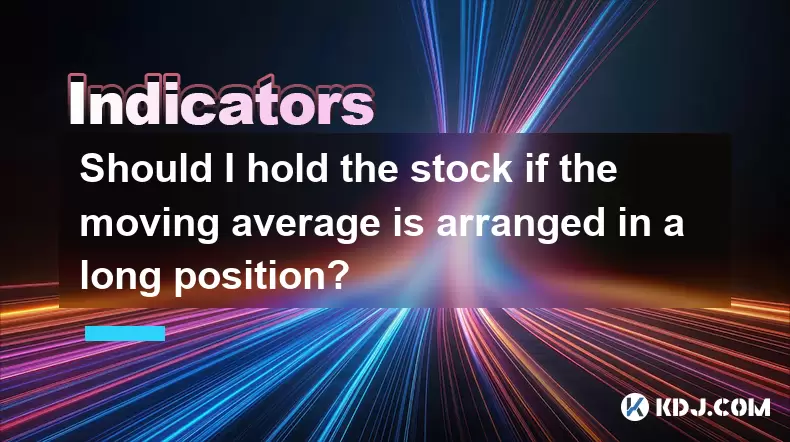
In the world of cryptocurrency trading, understanding technical analysis tools such as moving averages is crucial for making informed decisions. One common question that traders often ask is whether they should hold their position if the moving averages are arranged in a long position. Let's delve into this topic and explore the implications for your trading strategy.
Understanding Moving Averages in Cryptocurrency Trading
Moving averages are fundamental tools used by traders to smooth out price data and identify trends over a specific period. In the context of cryptocurrencies like Bitcoin and Ethereum, moving averages help traders make sense of the often volatile price movements. There are several types of moving averages, but the most commonly used are the Simple Moving Average (SMA) and the Exponential Moving Average (EMA).
The SMA calculates the average price of a cryptocurrency over a specified period, while the EMA gives more weight to recent prices, making it more responsive to new information. When discussing a long position, traders often look at the arrangement of these moving averages to determine the strength and direction of the trend.
What Does a Long Position Mean?
In cryptocurrency trading, a long position refers to the expectation that the price of a cryptocurrency will increase. Traders take a long position when they buy a cryptocurrency with the intent to sell it at a higher price later. When moving averages are arranged in a long position, it typically means that the shorter-term moving averages are above the longer-term moving averages, indicating a bullish trend.
For example, if the 50-day SMA is above the 200-day SMA, this is often interpreted as a bullish signal. Traders use this arrangement to confirm that the current trend is upward and that it might be a good time to hold or even increase their long positions.
Should You Hold If Moving Averages Are in a Long Position?
The decision to hold a position when moving averages are arranged in a long position depends on several factors. Here are some key considerations:
Strength of the Trend: A strong bullish trend indicated by a significant gap between the short-term and long-term moving averages might suggest holding your position. For instance, if the 50-day SMA is significantly higher than the 200-day SMA, the trend is robust, and holding might be beneficial.
Other Technical Indicators: While moving averages provide valuable insights, they should not be used in isolation. Other technical indicators such as the Relative Strength Index (RSI), Moving Average Convergence Divergence (MACD), and volume can provide additional context. If these indicators also confirm a bullish trend, holding your position could be a sound strategy.
Market Sentiment: The overall sentiment in the cryptocurrency market can influence your decision. Positive news, regulatory developments, and market sentiment can all impact the price of cryptocurrencies. If the sentiment is bullish and aligns with the moving average arrangement, holding your position might be advantageous.
Risk Management: Always consider your risk tolerance and investment goals. Even if moving averages suggest a long position, it's essential to have stop-loss orders in place to protect your investment. If the price drops below a critical moving average, it might be time to reassess your position.
How to Analyze Moving Averages for Long Positions
To effectively analyze moving averages for long positions, follow these steps:
Select the Appropriate Moving Averages: Choose the moving averages that align with your trading timeframe. For short-term trading, consider using the 10-day and 50-day SMAs. For long-term trading, the 50-day and 200-day SMAs might be more appropriate.
Plot the Moving Averages on Your Chart: Use a reliable cryptocurrency trading platform that allows you to plot multiple moving averages on your chart. Ensure that the shorter-term moving average is plotted in a different color from the longer-term moving average for easy visualization.
Identify the Crossover: Look for the point where the shorter-term moving average crosses above the longer-term moving average. This crossover is a potential signal to enter a long position.
Confirm the Trend: After the crossover, monitor the subsequent price action to confirm the trend. If the price continues to rise and the shorter-term moving average stays above the longer-term moving average, the trend is likely to persist.
Set Stop-Loss Orders: To manage risk, set a stop-loss order below a critical moving average or a recent swing low. This helps protect your investment if the market turns against your position.
Real-World Example: Bitcoin and Moving Averages
Let's consider a real-world example involving Bitcoin (BTC) to illustrate the use of moving averages in a long position. Suppose you're analyzing Bitcoin's price chart and notice that the 50-day SMA has crossed above the 200-day SMA. This golden cross indicates a potential bullish trend.
Initial Analysis: You observe that the 50-day SMA is now at $45,000, while the 200-day SMA is at $40,000. The gap between these two averages suggests a strong upward trend.
Confirmation with Other Indicators: You check the RSI, which is at 65, indicating that Bitcoin is not yet overbought. The MACD also shows a bullish crossover, confirming the upward momentum.
Market Sentiment: Positive news about institutional adoption of Bitcoin and favorable regulatory developments contribute to a bullish market sentiment.
Decision to Hold: Given the strong moving average arrangement, confirmation from other indicators, and positive market sentiment, you decide to hold your long position in Bitcoin. You set a stop-loss order at $39,000, just below the 200-day SMA, to manage your risk.
Practical Tips for Using Moving Averages in Long Positions
Here are some practical tips to enhance your use of moving averages when considering long positions in cryptocurrencies:
Use Multiple Timeframes: Analyze moving averages across different timeframes to get a comprehensive view of the trend. A long position confirmed on both daily and weekly charts can provide stronger conviction.
Combine with Price Action: Pay attention to price action around the moving averages. If the price consistently respects the moving averages as support or resistance, it can reinforce your decision to hold a long position.
Adjust Moving Averages: Depending on the cryptocurrency's volatility, you might need to adjust the periods of your moving averages. More volatile assets might require shorter periods to capture trends effectively.
Stay Informed: Keep up with market news and developments that could impact the price of the cryptocurrency you're holding. Sudden changes in market conditions can affect the validity of your moving average analysis.
Frequently Asked Questions
Q: Can moving averages alone be enough to make trading decisions in cryptocurrency markets?
A: While moving averages are powerful tools, they should not be used in isolation. Combining them with other technical indicators, fundamental analysis, and market sentiment can provide a more comprehensive view of the market, leading to better-informed trading decisions.
Q: How do I know if a long position is still valid when using moving averages?
A: A long position remains valid as long as the shorter-term moving average stays above the longer-term moving average, and other confirming indicators support the bullish trend. Regularly monitor the price action and adjust your strategy based on new information.
Q: What should I do if the moving averages start to converge after being in a long position?
A: Converging moving averages can indicate a weakening trend. In this case, consider tightening your stop-loss orders and be prepared to exit the position if the shorter-term moving average crosses below the longer-term moving average, signaling a potential trend reversal.
Q: Are there any specific cryptocurrencies that work better with moving average analysis?
A: Moving average analysis can be applied to any cryptocurrency, but it tends to be more effective with assets that have higher liquidity and less volatility, such as Bitcoin and Ethereum. For more volatile altcoins, shorter moving average periods might be necessary to capture rapid price movements.
Disclaimer:info@kdj.com
The information provided is not trading advice. kdj.com does not assume any responsibility for any investments made based on the information provided in this article. Cryptocurrencies are highly volatile and it is highly recommended that you invest with caution after thorough research!
If you believe that the content used on this website infringes your copyright, please contact us immediately (info@kdj.com) and we will delete it promptly.
- The non-fungible token market has experienced another slump in April 2025
- 2025-06-15 10:25:12
- CZ Explains Hong Kong's Pro-Crypto Stance, Acting as a Sandbox for China
- 2025-06-15 10:25:12
- XRP Futures Ratio Hits 1-month Low as Shorts Outnumber Longs By a Considerable Margin
- 2025-06-15 10:20:11
- The U.S. Securities and Exchange Commission (SEC) has delayed its decision on several spot crypto ETFs
- 2025-06-15 10:20:11
- Gros Islet, Saint Lucia, Saint Lucia – Structural changes in the global trading landscape
- 2025-06-15 10:15:11
- Trump Media & Technology Group (TMTG) Is Developing a Utility Token to Power Truth+ Subscriptions
- 2025-06-15 10:15:11
Related knowledge
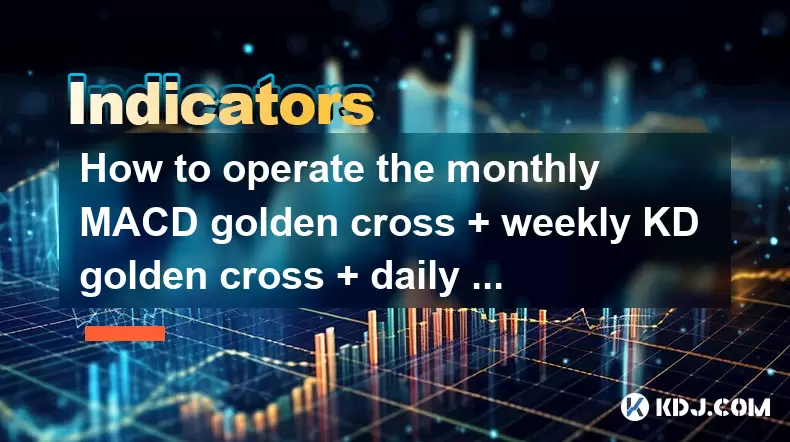
How to operate the monthly MACD golden cross + weekly KD golden cross + daily volume breakthrough?
Jun 15,2025 at 05:36am
Understanding the Strategy: Monthly MACD Golden CrossTo effectively operate the monthly MACD golden cross, traders must first understand what this signal entails. The MACD (Moving Average Convergence Divergence) golden cross occurs when the MACD line crosses above the signal line on a given chart timeframe. When this happens on the monthly chart, it sug...
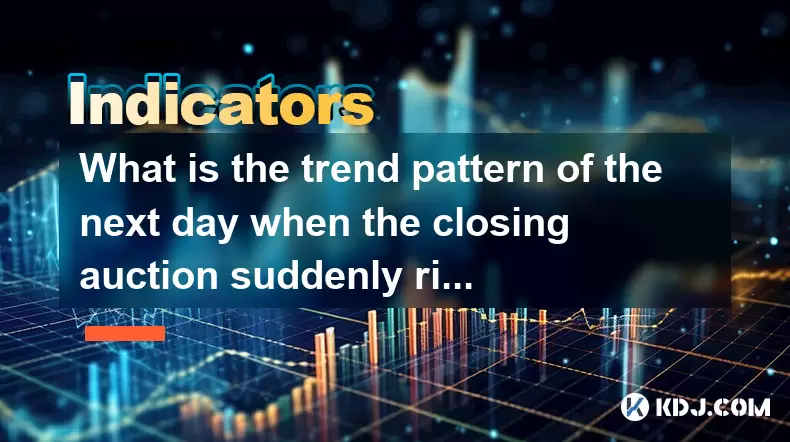
What is the trend pattern of the next day when the closing auction suddenly rises?
Jun 15,2025 at 08:15am
Understanding Closing Auctions in Cryptocurrency MarketsIn the context of cryptocurrency trading, a closing auction refers to a mechanism used by exchanges to determine the closing price of an asset at the end of a trading session. This process typically occurs within a short time window before the market closes for the day and aims to provide a fair an...

What does it mean when the volume fluctuates during the sideways trading at high levels?
Jun 15,2025 at 10:28am
Understanding Volume Fluctuations in Sideways TradingWhen volume fluctuates during sideways trading at high levels, it refers to the changes in the number of assets traded over a given period while the price remains relatively stable, moving within a defined range. This phenomenon typically occurs when the market lacks a clear directional bias—neither b...
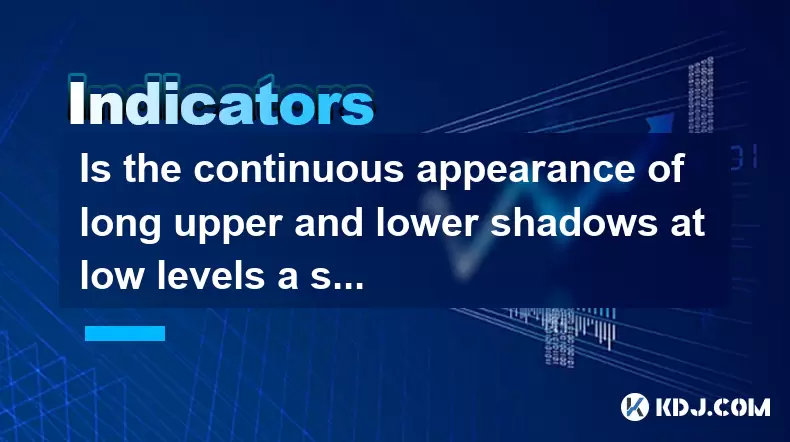
Is the continuous appearance of long upper and lower shadows at low levels a signal of accumulation?
Jun 15,2025 at 01:43am
Understanding Long Upper and Lower Shadows in Candlestick ChartsIn the world of cryptocurrency trading, candlestick patterns are widely used to analyze price movements. A long upper shadow, also known as a wick or tail, indicates that the price rose significantly during the period but was pushed back down by selling pressure. Conversely, a long lower sh...
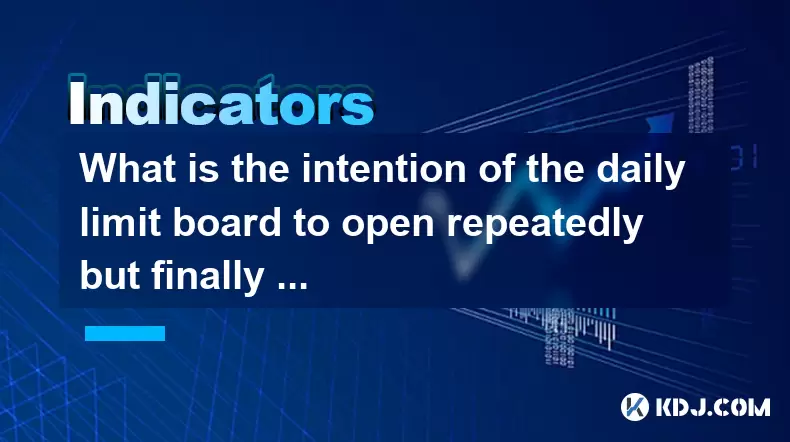
What is the intention of the daily limit board to open repeatedly but finally close?
Jun 15,2025 at 01:08am
Understanding the Daily Limit Board in Cryptocurrency TradingIn cryptocurrency trading, a daily limit board refers to a price movement restriction mechanism applied by certain exchanges or regulatory bodies. This mechanism is primarily used to prevent extreme volatility and panic selling or buying during periods of intense market fluctuation. When an as...

How to calculate the probability of trend continuation after the MACD column divergence?
Jun 14,2025 at 08:01am
Understanding MACD Column DivergenceThe Moving Average Convergence Divergence (MACD) is a widely used technical indicator in cryptocurrency trading. The MACD column, also known as the histogram, represents the difference between the MACD line and the signal line. When price makes a new high or low but the MACD histogram does not confirm this movement, a...

How to operate the monthly MACD golden cross + weekly KD golden cross + daily volume breakthrough?
Jun 15,2025 at 05:36am
Understanding the Strategy: Monthly MACD Golden CrossTo effectively operate the monthly MACD golden cross, traders must first understand what this signal entails. The MACD (Moving Average Convergence Divergence) golden cross occurs when the MACD line crosses above the signal line on a given chart timeframe. When this happens on the monthly chart, it sug...

What is the trend pattern of the next day when the closing auction suddenly rises?
Jun 15,2025 at 08:15am
Understanding Closing Auctions in Cryptocurrency MarketsIn the context of cryptocurrency trading, a closing auction refers to a mechanism used by exchanges to determine the closing price of an asset at the end of a trading session. This process typically occurs within a short time window before the market closes for the day and aims to provide a fair an...

What does it mean when the volume fluctuates during the sideways trading at high levels?
Jun 15,2025 at 10:28am
Understanding Volume Fluctuations in Sideways TradingWhen volume fluctuates during sideways trading at high levels, it refers to the changes in the number of assets traded over a given period while the price remains relatively stable, moving within a defined range. This phenomenon typically occurs when the market lacks a clear directional bias—neither b...

Is the continuous appearance of long upper and lower shadows at low levels a signal of accumulation?
Jun 15,2025 at 01:43am
Understanding Long Upper and Lower Shadows in Candlestick ChartsIn the world of cryptocurrency trading, candlestick patterns are widely used to analyze price movements. A long upper shadow, also known as a wick or tail, indicates that the price rose significantly during the period but was pushed back down by selling pressure. Conversely, a long lower sh...

What is the intention of the daily limit board to open repeatedly but finally close?
Jun 15,2025 at 01:08am
Understanding the Daily Limit Board in Cryptocurrency TradingIn cryptocurrency trading, a daily limit board refers to a price movement restriction mechanism applied by certain exchanges or regulatory bodies. This mechanism is primarily used to prevent extreme volatility and panic selling or buying during periods of intense market fluctuation. When an as...

How to calculate the probability of trend continuation after the MACD column divergence?
Jun 14,2025 at 08:01am
Understanding MACD Column DivergenceThe Moving Average Convergence Divergence (MACD) is a widely used technical indicator in cryptocurrency trading. The MACD column, also known as the histogram, represents the difference between the MACD line and the signal line. When price makes a new high or low but the MACD histogram does not confirm this movement, a...
See all articles

























































































